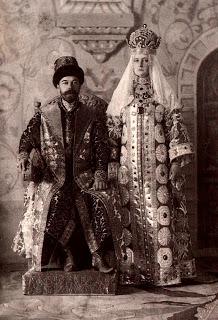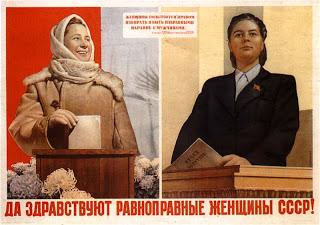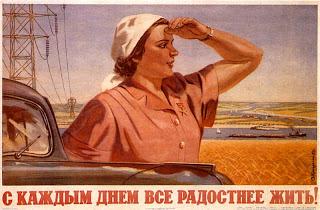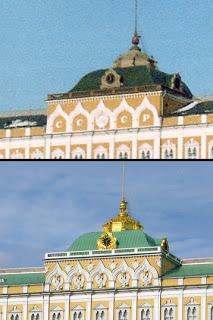By Kelly Raftery

The last Romanov Rulers,
Nicholas II and Alexandra
at a fancy dress ball.
No one monolithic organization overthrew the Russian Empire. In fact, even after Tsar Nikolai II was deposed in February 1917, his government remained at least partially in power, trying by half-measures to stem the rising tide of rebellion. Ultimately, a coalition of various Socialist factions united and took power in what was referred to as the “Great October Socialist Revolution.” (To make things even more confusing, today the anniversary of the Revolution is celebrated on November 7th.) The Civil War followed hard on the heels of the Revolution and lasted for half a decade more. Reds (Socialists) battled Whites (Tsarist supporters) throughout the Empire from Ukraine to the Russian Far East, Novgorod to Bukhara. In Central Asia, a resistance group called the basmachi was not completely put down until 1934; seventeen years after the Revolution had begun on the streets of St. Petersburg.
Let’s please take a moment to discuss definitions. The Soviet Union was never a Communist country, though it was ruled by an organization called the Communist Party. “Communism” and “Socialism” were theoretical stages of evolutionary economic development as outlined by Karl Marx, but whose theoretical roots lay further back with thinkers such as Thomas Moore in the 16th Century England and Jean Jacques Rousseau in 18th Century France. In theory, Communism was a more evolved form of society in which the means of production and distribution (e.g. land, factories, shops, etc.) were placed in workers’ hands. This more equitable distribution of resources would then eliminate poverty and industrial abuses. Socialism was the middle stage between Capitalism and Communism. The Soviet Union never “achieved Communism” but always strived towards it as a Socialist state.

Propaganda poster reading,
"Long Live Equal Rights for Women of the USSR!"
Then, at some point along the way, the idealistic goals and heady dreams of the revolution–fair distribution of wealth and resources, equal rights for all citizens, collective ownership of farms, factories and shops and a better life for everyone got perverted. Some say that the entire theory is erroneous; some say it was Lenin’s (the first leader of the USSR) fault. Many more point to the Stalin era (1928-53) as the point at which the ideals of the revolution were warped by a tyrant who was willing to claw his way to the top of a towering pile of corpses to achieve his goals.

"We live more happily with each day!"
At the end of Stalin’s time in power, the central government (not the workers) had control of all means of production and property, any opposition (real or imagined) was forcibly silenced and the Soviet Union was a modern, multicultural state. Tens of millions of men, women and children were killed under Stalin either through direct means like a bullet to the back of the head in the basement of KGB headquarters, or indirect methods such as starving to death as the result of harsh policies to wrest private farms away from “wealthy” peasants. I wrote a bit about this time in "A Soviet Secret."

Double-headed eagles take the place of
USSR after 1991.
When I taught Russian Pop Culture of the 20th Century, I did an exercise with my students. Sometime about two-thirds of the way through the semester, I entered the room and put index cards on each desk. As my students filed in, I looked at them quite sadly. I then informed them that the Department of Foreign Languages had decided that they were not pleased with how I was running the class and therefore were terminating me immediately. The entire course would be restructured, all the work they had done to that point was no longer valid and a new instructor would arrive shortly and give them a new syllabus, texts and assignments. I reemphasized that everything they had done to this point was worthless and would be discarded. They would need to meet their new instructor and start all over again.
Once the hubbub died down, I asked my students to write on one side of the index card I had placed on their desks how that announcement made them feel. I then asked them to turn the index card over and write on the other side how they would feel if that happened to their country.
It has been over twenty years since the Collapse of the Soviet Union when one country became fifteen and the U.S. “won” the Cold War. A whole generation of children has grown up never knowing the Soviet Union at all. But, take a minute today and think about that time when everything people had known was destroyed – their currency, their government, even their belief system was negated, what they believed to be true, all plans for the future rent asunder and before them stood a great abyss of uncertainty and chaos.
Now how does that make you feel? How would you feel if that was your country?

